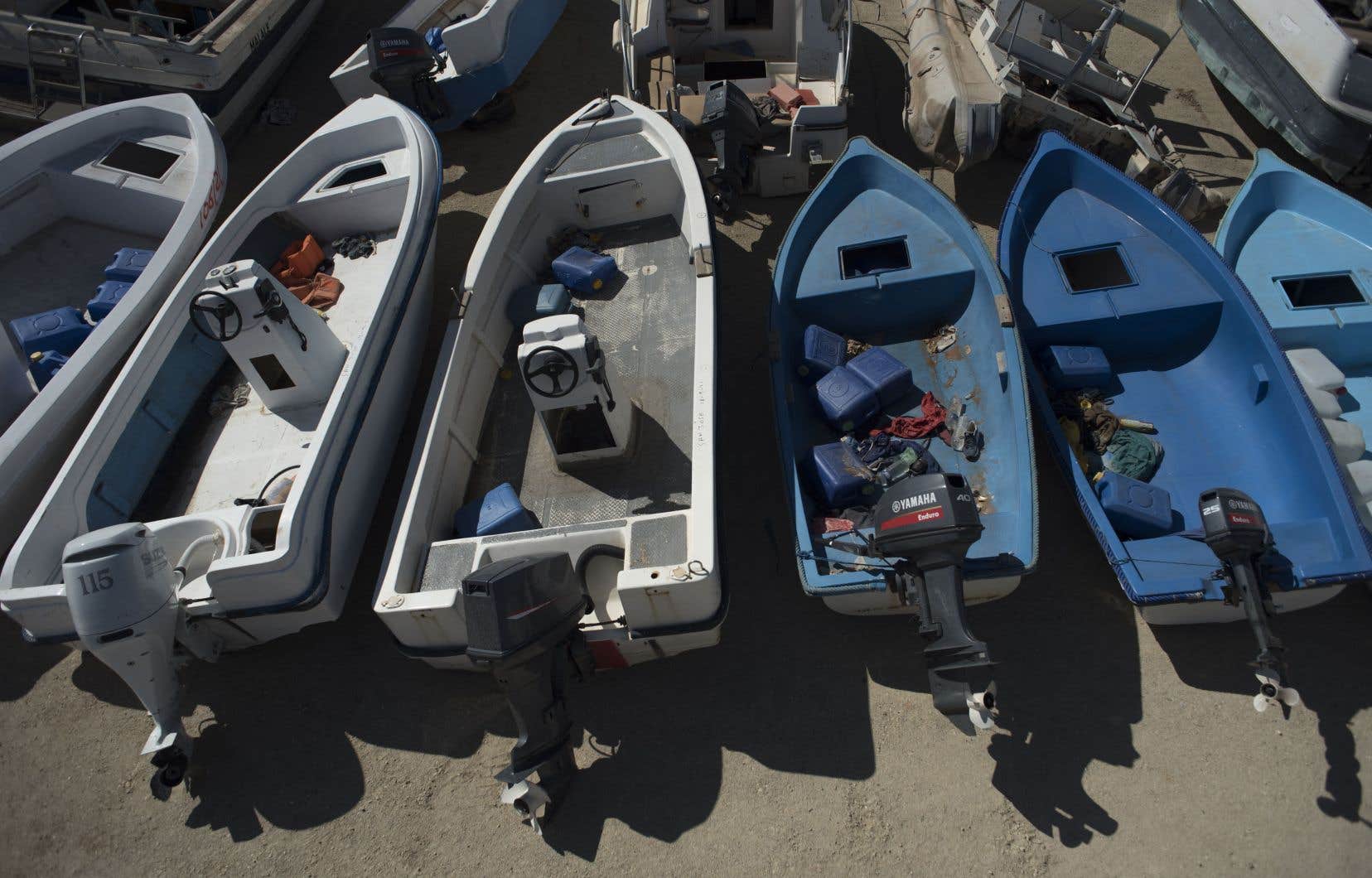The matter went up to the highest level of the Algerian state.
At the beginning of January, President Abdelmadjid Tebboune had the country’s director general of police, Farid Bencheikh, fired after the escape of an Algerian around fifteen years old hidden in the landing gear of an airliner. ‘Air Algérie providing the connection between Oran and Paris.
The illegal alien, without papers, was found in a state of “severe hypothermia” on December 28 at Orly airport, thus embarrassing the Algerian regime, by lengthening an increasingly list long history of young people from the country ready to brave death to give themselves a better life.
The phenomenon is growing. It partly confirms the failure of Hirak, this peaceful movement born five years ago, to the day this week, calling for the fall of the Algerian autocratic regime and for civil and democratic reform of the country. It was February 16, in the town of Kherrata, 300 kilometers east of Algiers. Six days later, this so-called revolution of smiles took over the streets of the capital, bringing a real wind of hope and change to Algeria for the first time since independence.
At the time, the spontaneous popular uprising, opposed to a fifth presidential term for Abdelaziz Bouteflika, in power for twenty years, had radically reduced the number of these harragas, as they say there — in French: “those who burn”… their past, their identity papers in the hope of finding refugee status elsewhere. But the repression of Hirak and the toughening of the regime to constrain the impulse for freedom which was expressed every week in the streets, until the first confinements imposed by the coronavirus pandemic, will not have made it a lasting trend.
“Since 2021, we have witnessed an increase in the arrival of illegal Algerian immigrants in the south of Spain,” indicates in an interview Marie-Ange Colsa Herrera, president of the International Center for the Identification of Missing Migrants (CIPIMD), attached by The duty in Malaga. This exile most often passes by sea, on makeshift boats, to reach the coasts of a European country bordering the Mediterranean, Spain in the lead. “But for two years, this migratory route, as risky as it may be, has been changing due to the political and especially economic context of Algeria which is now pushing into exile not only young men, as before, but more and more young families, with children. »
Lack of freedom
Classified in the latest report by the NGO Freedom House in the list of “countries without freedom”, whose wealth is controlled by “a political caste” mainly military, Algeria cultivates its paradox with significant natural resources which struggle to lift its residents out of poverty. The North African country is the world’s ninth largest exporter of liquefied natural gas. In 2022, the per capita income there was around US$3,700, or 14 times less than in Canada.
According to the Arab Barometer, a network of independent researchers, 95% of Algerians wanted their country’s political system to be reformed in 2022, pointing to corruption as the most urgent problem to address in their eyes. This corruption was at the heart of the slogans carried in the streets by Hirak activists, between 2019 and 2021.
Algeria is also a young country where more than half of its 45 million inhabitants are under 30 years old. A youth, hit hard by unemployment, according to official statistics, living with difficulty in the impasses constructed by the regime and who are now ready to face all dangers, including the worst, to escape.
In 2023, Algerian authorities claimed to have arrested nearly 4,800 of these harragas on its coasts or on its territorial waters, almost as much as in 2022, despite “difficult climatic conditions in the Mediterranean in the first part of 2023”, which confirms the despair experienced by these Algerians, underlines Mme Colsa Herrera.
And falling through the cracks does not bode well for these aspirants to exile, 452 of whom disappeared or died at sea out of the 802 passengers who left by sea towards Spain on 46 boats and whose fate, often fatal, was closely followed in 2023 by the CIPIMD.
In total, 6,600 migrants who left Algeria, but also Morocco or Tunisia, to try to reach Spain, died in 2023. According to the Spanish NGO Caminando Fronteras, this represents a rate of 18 deaths per day, three times more than the previous year and above all the “highest” results recorded by the organization since its founding, its coordinator, Helena Maleno, said in a press release at the start of the year.
It is also only the visible part, since “what the Mediterranean takes, it does not always give back”, comments Marie-Ange Colsa Herrera, who deplores the increasingly less accessible rescue conditions and especially the migratory executives are turning more and more in on themselves, in several European countries, under the effect of the rise of right-wing radicalism. An exploitation of the fear of others for political purposes which thus contributes to maintaining and fueling these clandestine and dangerous routes.
This increase in migratory tragedies accompanies the surge in migrants arriving illegally in Spain last year, mainly through the Canary Islands. 57,000 people disembarked there, from frail overloaded skiffs, double the number from the previous year, according to figures from the Spanish government.
These flows are increasingly troublesome for the Algerian authorities, who seek to contain these numerous candidates for exile, very few of whom reach their destination. In June 2022, the bodies of two men were found lifeless in the landing gear of another plane at Algiers airport. The plane had just made a round trip between the capital of Algeria and Barcelona, which became for these two illegal immigrants a one-way ticket to death.
At the time, the regime suspended several senior Algerian police officials in response to the deaths of these two young people.
